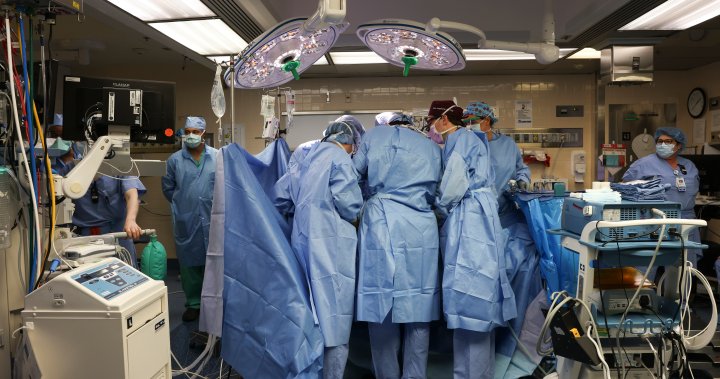
Doctors transplant gene-edited pig kidney into living human for 1st time
Global News
Doctors in Boston have transplanted a pig kidney into a 62-year-old patient, the latest experiment in the quest to use animal organs in humans.
Doctors in Boston have transplanted a pig kidney into a 62-year-old patient, the latest experiment in the quest to use animal organs in humans.
Massachusetts General Hospital said Thursday that it’s the first time a genetically modified pig kidney has been transplanted into a living person. Previously, pig kidneys have been temporarily transplanted into brain-dead donors. Also, two men received heart transplants from pigs, although both died within months.
The patient, Richard “Rick” Slayman of Weymouth, Massachusetts, is recovering well from the surgery last Saturday and is expected to be discharged soon, doctors said Thursday.
Dr. Tatsuo Kawai, the transplant surgeon, said the team believes the pig kidney will work for at least two years. If it fails, Slayman could go back on dialysis, said kidney specialist Dr. Winfred Williams. He noted that unlike the pig heart recipients who were very sick, Slayman is “actually quite robust.”
Slayman had a kidney transplant at the hospital in 2018, but had to go back on dialysis last year when it showed signs of failure. When dialysis complications arose requiring frequent procedures, his doctors suggested a pig kidney transplant, he said in a statement released by the hospital.
“I saw it not only as a way to help me, but a way to provide hope for the thousands of people who need a transplant to survive,” said Slayman, a systems manager for the Massachusetts Department of Transportation.
The transplant surgery took four hours, with 15 people in the operating room who cheered when the kidney started making urine, doctors said at a news conference.
Dr. Parsia Vagefi, chief of surgical transplantation at UT Southwestern Medical Center, called the announcement “a big step forward.” But echoing the Boston doctors, he said studies involving more patients at different medical centers would be needed for it to become more commonly available.











